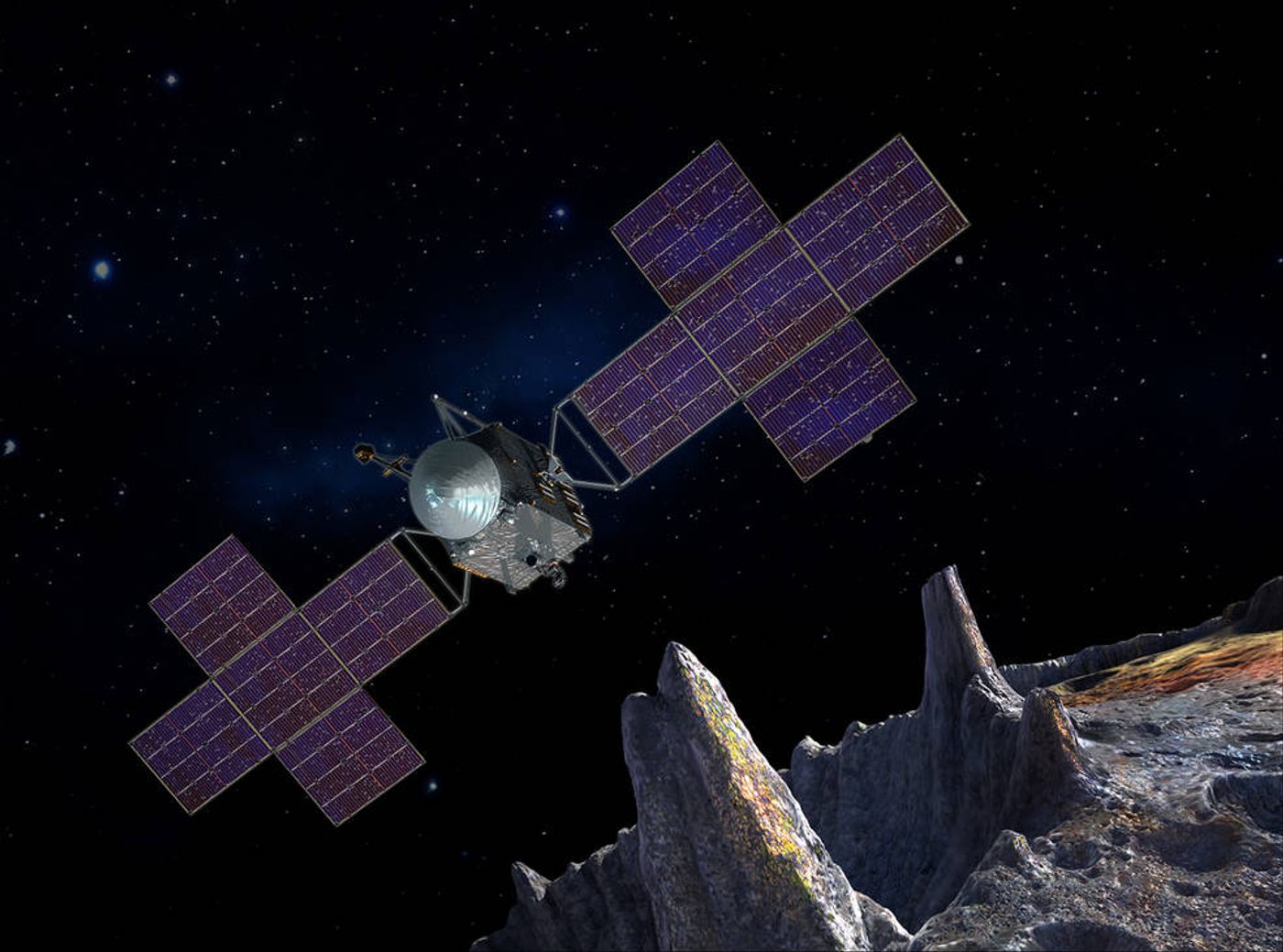NASA Expedites Psyche Mission to Visit the Metal Asteroid 4 Years Earlier
NASA recently announced it would be expediting its mission to visit Psyche, a metallic asteroid floating around in the Solar System. The goal is to learn more about the unique qualities of metallic asteroids and how they form.
Image Credit: NASA/JPL-Caltech/Arizona State Univ./Space Systems Loral/Peter Rubin
The new launch date in 2022, which is now being scheduled for one year earlier because of favorable orbital conditions, means that the spacecraft will arrive at Psyche in 2026, which is four years earlier than the original estimated time of arrival.
The benefits of expediting the mission, of course, are to get scientific data sooner than previously possible and reduce costs associated with expensive space travel by taking advantage of the pleasant trajectory, which reduces our dependence on Earth’s gravity for help.
“We challenged the mission design team to explore if an earlier launch date could provide a more efficient trajectory to the asteroid Psyche, and they came through in a big way,” said Jim Green, director of the Planetary Science Division at NASA Headquarters in Washington. “This will enable us to fulfill our science objectives sooner and at a reduced cost.”
The new timing also means NASA doesn’t have to spend as much on heat shield protection, as the spacecraft will spend more time further away from the Sun than it would have in the original ETA. This also means the spacecraft will receive higher-quality solar panels, which can power it while further away from the Sun’s light for longer.
Although we won’t be using Earth’s gravitational pull to assist the spacecraft’s journey to its destination, we will still be using Mars’ gravitational influence to help it get where it needs to go. This means we can use less fuel and conserve energy on the way to Psyche.
Related: When it comes to asteroid collisions, size does matter
Psyche is so interesting because its high metal composition has scientists thinking that it may be the case due to being a chunk of a failed planet’s core. In other words, things didn’t quite stick together like they were supposed to, so the planet never had a chance to form as it had intended.
While it’s just a theory at this point in time, getting up close and personal with Psyche could reveal some answers about the asteroid, and metallic asteroids in general, all in one fell swoop.
For now, you can see the following illustration of what Psyche might look like as the spacecraft meets its destination:
It should be interesting to see what might become of researching Psyche, as there is certainly a lot of interest in eventually mining space rocks for their valuable resources, which can be put to good use right here on Earth.
Source: NASA









